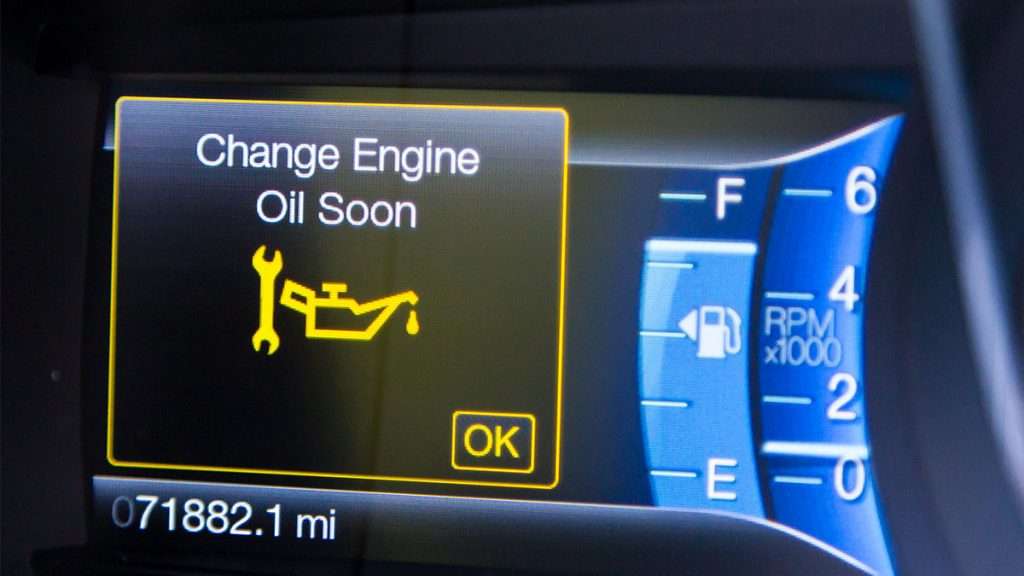Seeing the “Change Engine Oil Soon” warning can be alarming. It’s a crucial reminder for car maintenance.
Regularly changing your engine oil is essential for your vehicle’s health. It ensures your engine runs smoothly and efficiently. Ignoring this warning can lead to serious engine problems and costly repairs. In this blog post, we will explore why it’s important to change your engine oil promptly.
We’ll discuss the benefits of timely oil changes and how they can extend the life of your car. Understanding these aspects will help you keep your vehicle in top shape and avoid unnecessary stress. So, let’s dive into the importance of heeding that “Change Engine Oil Soon” notification.
Importance Of Timely Oil Change
Changing engine oil on time is crucial for your car’s health. It ensures your engine runs smoothly and lasts longer. Ignoring oil changes can lead to severe problems and costly repairs.
Prevent Engine Damage
Old oil loses its ability to lubricate engine parts. This causes increased friction, which can damage your engine. Fresh oil keeps your engine parts moving smoothly, avoiding wear and tear. Regular oil changes are like a shield for your engine, keeping it safe from harm.
Ensure Smooth Operation
Clean oil allows your engine to run effortlessly. It reduces friction and heat, which means your engine works more efficiently. With timely oil changes, your car will perform better and feel smoother on the road.
| Benefits | Details |
|---|---|
| Better Performance | Reduces engine strain and improves efficiency. |
| Longer Engine Life | Prevents wear and extends engine lifespan. |
| Cost Savings | Avoids expensive repairs from engine damage. |
Signs Your Car Needs An Oil Change
Keeping your engine oil fresh is crucial for your car’s health. Old oil can cause engine parts to wear out quicker. Knowing the signs that your car needs an oil change can save you from costly repairs. Below are some clear indicators that it’s time to change your engine oil.
Dashboard Warning Light
The dashboard warning light is a clear sign. This light usually looks like an oil can or says “Check Oil.” When this light comes on, your car’s system is telling you something. It means the oil level is low or the oil is dirty. Ignoring this light can lead to severe engine damage. Always pay attention to dashboard warnings.
Unusual Engine Noises
Unusual engine noises are another sign. If you hear knocking or rumbling sounds, it might be due to old oil. Fresh oil keeps the engine parts lubricated. When the oil is old, it loses its ability to lubricate. This causes metal parts to grind against each other. The noise is a clear warning that your oil needs changing.
Choosing The Right Engine Oil
Choosing the right engine oil is crucial for your vehicle’s health. The right oil ensures smooth operation and extends engine life. But with so many options, it can be confusing. Let’s break it down step by step.
Types Of Engine Oils
There are several types of engine oils available. Each type has different properties and benefits. The most common types are conventional, synthetic, and high-mileage oils.
Conventional oil is the standard option. It’s suitable for regular driving conditions. Synthetic oil offers better performance and protection. It is ideal for extreme temperatures and high-performance engines.
High-mileage oil is designed for older vehicles. It helps reduce leaks and oil consumption. Choosing the right type depends on your vehicle’s needs and your driving habits.
Manufacturer Recommendations
Always follow your vehicle manufacturer’s recommendations. They know what works best for your engine. Check your owner’s manual for the right oil type and viscosity.
Using the recommended oil ensures optimal performance and longevity. It can also help maintain your warranty. Never guess or choose based on price alone. The right oil makes a big difference.
Remember, using the wrong oil can harm your engine. Stick to what the experts suggest for peace of mind.

Step-by-step Oil Change Guide
Changing your engine oil is essential for keeping your car running smoothly. Regular oil changes extend the life of your engine. Follow this step-by-step guide to change your oil efficiently and safely.
Gather Necessary Tools
First, collect all the tools you need. Grab an oil filter wrench, a drain pan, and a funnel. You also need a new oil filter and enough oil for your car. Don’t forget a wrench or socket set and a jack with jack stands.
Drain Old Oil
Next, lift your car with the jack and secure it with jack stands. Place the drain pan under the oil drain plug. Use your wrench to loosen and remove the plug. Allow the old oil to flow into the drain pan. Let it drain completely.
Replace Oil Filter
Now, locate the oil filter. Use the oil filter wrench to remove it. Be careful; some oil may still be in the filter. Clean the filter area with a rag. Install the new filter by hand. Tighten it snugly but not too tight.
Add New Oil
Finally, locate the oil filler cap on the engine. Remove the cap and place the funnel in the opening. Pour in the new oil. Check your car’s manual for the exact amount. Replace the oil filler cap and start the engine. Run it for a few minutes, then check the oil level with the dipstick. Add more oil if needed.
Benefits Of Regular Oil Changes
Regular oil changes are vital for your car’s health. Fresh oil keeps the engine parts lubricated. This prevents damage and ensures smooth operation. Regular oil changes provide numerous benefits. Let’s explore a few key advantages.
Enhanced Engine Performance
New oil helps the engine run smoothly. It reduces friction between parts. This leads to better performance. Old oil gets dirty over time. It can form sludge. This slows down the engine. Clean oil prevents this build-up. Your car runs more efficiently. You notice a smoother ride.
Improved Fuel Efficiency
Fresh oil improves fuel efficiency. The engine does not work as hard. Less friction means less fuel is used. Dirty oil increases engine drag. This makes the car consume more fuel. Regular oil changes help you save money on gas. Your vehicle runs more economically.
Common Oil Change Mistakes
Changing your car’s engine oil is a simple task that can keep your vehicle running smoothly. But even the most seasoned car owners can make mistakes. Let’s explore some common oil change mistakes and how to avoid them.
Using Wrong Oil Type
Using the wrong type of oil can harm your engine. Always check your car’s manual for the recommended oil type. Here are some common mistakes related to oil type:
- Viscosity Issues: Using oil with the wrong viscosity can reduce engine efficiency.
- Wrong Grade: Using an oil grade not recommended can lead to engine wear.
- Mixing Oils: Mixing different types of oil can cause sludge buildup.
Neglecting Oil Filter Replacement
The oil filter is crucial for keeping your engine clean. Neglecting to replace it can cause several issues:
- Clogging: A clogged filter can reduce oil flow and damage the engine.
- Contamination: Old filters can’t trap contaminants effectively.
- Increased Wear: Dirty oil can increase engine wear and tear.
Changing your engine oil is essential, but doing it right is just as important. Avoid these common mistakes to ensure your car’s longevity and performance.
Environmental Impact Of Used Oil
Used engine oil can harm the environment if not disposed of properly. This oil contains toxic chemicals and heavy metals. When these substances enter soil or water, they can cause serious damage. It’s important to understand the environmental impact of used oil and how to manage it responsibly.
Proper Disposal Methods
Proper disposal of used oil is crucial. Never pour used oil down drains or on the ground. These actions can lead to water contamination and soil pollution. Instead, collect the used oil in a clean container with a tight lid. Label the container clearly to avoid confusion.
Take the container to a local recycling center or an automotive service station. Many places accept used oil for proper disposal. You can also contact your local waste management authority for guidance.
Recycling Used Oil
Recycling used oil is another effective method. Recycled oil can be re-refined into new oil, used in power plants, or processed into fuel oils. This process reduces the demand for new oil and lessens the environmental burden.
Many recycling centers and auto shops offer oil recycling services. Check with your local facilities to see if they accept used oil. By recycling, you help conserve resources and protect the environment.

Professional Vs. Diy Oil Change
Choosing between a professional and a DIY oil change can be tricky. Both options have their merits. This decision boils down to cost, time, and effort. Let’s break it down.
Cost Considerations
Professional oil changes can be more expensive. Service centers charge for labor and parts. The average cost ranges from $35 to $75. This price includes oil, filter, and service fees.
On the other hand, a DIY oil change can save money. You only pay for oil and a filter. The total cost usually falls between $20 and $40. Here’s a simple table for comparison:
| Type | Average Cost |
|---|---|
| Professional | $35-$75 |
| DIY | $20-$40 |
Time And Effort
A professional oil change is convenient. You can relax while experts handle the work. It usually takes about 30 minutes. This is an ideal choice for those with a busy schedule.
In contrast, a DIY oil change requires time and effort. You need tools and space to work. The process might take 45 minutes to an hour. This includes preparation and cleanup. Yet, it can be rewarding for those who like hands-on tasks.
- Professional oil change: Quick and hassle-free.
- DIY oil change: More time-consuming but cost-effective.
Both methods have their pros and cons. Think about your budget and schedule. Choose the option that suits your needs best.
Frequently Asked Questions
When Should I Change My Engine Oil?
Change your engine oil every 3,000 to 5,000 miles. Follow your vehicle’s manual for specific intervals.
What Happens If I Don’t Change My Engine Oil?
Not changing oil leads to engine wear, overheating, and reduced performance. It can cause costly damage.
How Do I Know My Car Needs An Oil Change?
Look for signs like dark, dirty oil, engine noise, and the dashboard oil light.
Can I Change My Engine Oil Myself?
Yes, you can. Ensure you have the right tools, oil, and filter. Follow a guide or manual.
Conclusion
Changing your engine oil soon is essential for your car’s health. Regular oil changes keep your engine running smoothly. They prevent wear and tear. Ignoring oil changes can lead to costly repairs. So, don’t wait. Check your oil level frequently.
Schedule a change if needed. This simple task can extend your car’s life. It ensures better performance and efficiency. Keep your engine in top shape. Your car will thank you. Safe driving!










